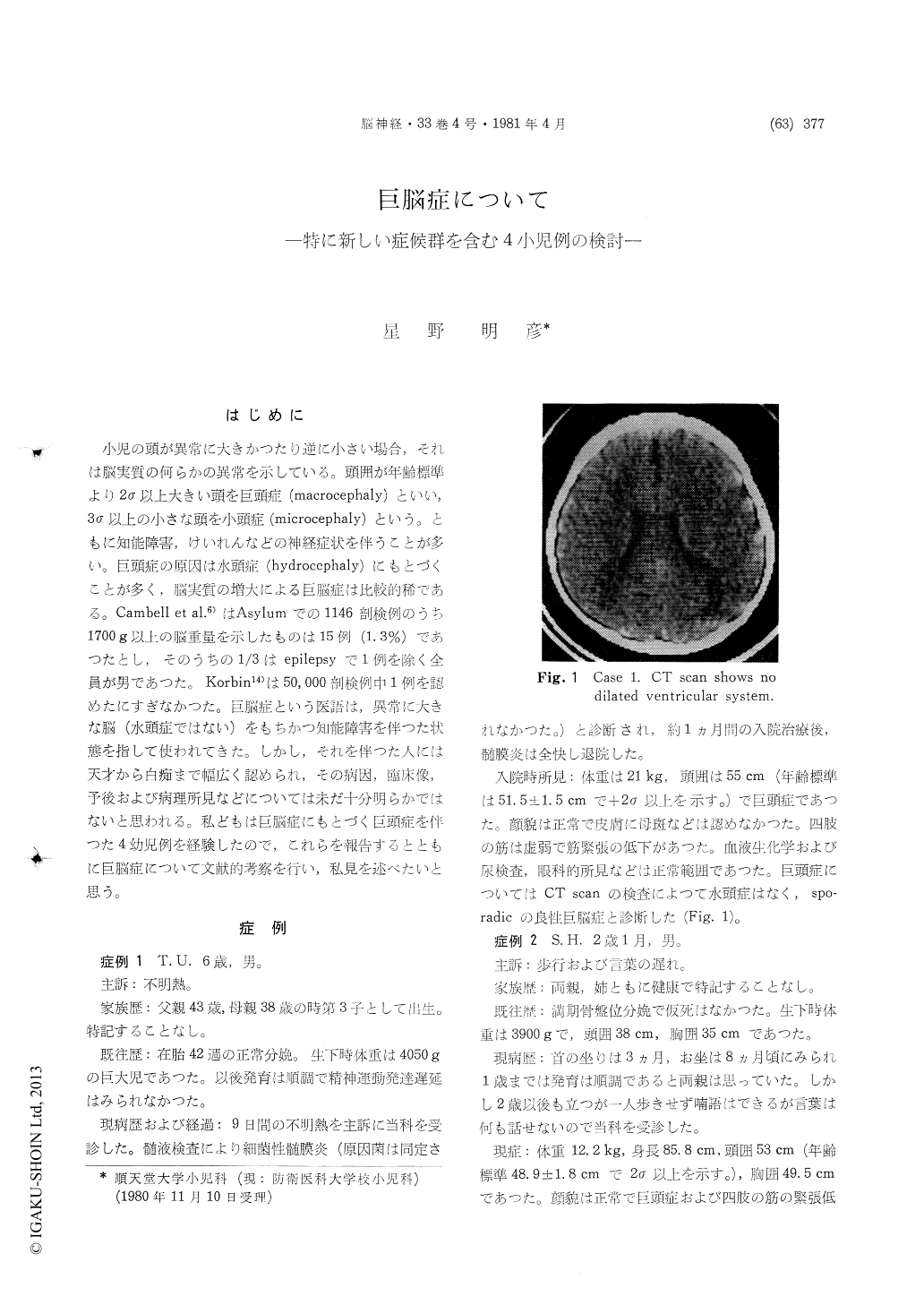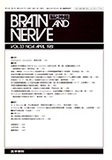Japanese
English
- 有料閲覧
- Abstract 文献概要
- 1ページ目 Look Inside
はじめに
小児の頭が異常に大きかつたり逆に小さい場合,それは脳実質の何らかの異常を示している。頭囲が年齢標準より2σ以上大きい頭を巨頭症(macrocephaly)といい,3σ以上の小さな頭を小頭症(microcephaly)という。ともに知能障害,けいれんなどの神経症状を伴うことが多い。巨頭症の原因は水頭症(hydrocephaly)にもとづくことが多く,脳実質の増大による巨脳症は比較的稀である。Carnbell et al.6)はAsylumでの1146剖検例のうち1700g以上の脳重量を示したものは15例(1.3%)であつたとし,そのうちの1/3はepilepsyで1例を除く全員が男であつた。Korbin14)は50,000剖検例中1例を認めたにすぎなかつた。巨脳症という医語は,異常に大きな脳(水頭症ではない)をもちかつ知能障害を伴つた状態を指して使われてきた。しかし,それを伴つた人には天才から白痴まで幅広く認められ,その病因,臨床像,予後および病理所見などについては未だ十分明らかではないと思われる。私どもは巨脳症にもとづく巨頭症を伴つた4幼児例を経験したので,これらを報告するとともに巨脳症について文献的考察を行い,私見を述べたいと思う。
The author recently examined four children of clinical macrocephaly. Their occipitofrontal head circumference was exceeded 2 standard deviations above the mean for chronological age. Megalence-phaly with normal ventricular system was proved by computerized tomography or pneumoencephalo-graphy. The purpose of this paper is to report four cases with various clinical aspects and to dis-cuss the similarity of these patients. Additionally, previously reported syndromes with macrocephaly and multiple hemangiomas were presented in Table 4.
Case 1. A 6 year-old boy was accidentally admit-ted because of infectious disease. His development was uneventful.
Case 2. A 2 year-old boy was admitted because of delayed speech and delayed walking. He had no neonatal complications and no history of con-vulsions.
Case 3. A 4 year-old boy was accidentally admit-ted because of abdominal pain. His physical ex-amination exhibited diffuse hemangiomatous lesions on the right side of face, neck and chest, and con-genital glaucom. He was diagnosed as Sturge-Weber anomalad at the age of 2 years.
Case 4. A 3 year-old girl was admitted because of distended abdomen. She had widely spread straw-bery hemangioma on her right abdominal wall andblue and brownish phacomatosis on her back. GI tract examination showed lymphoid hyperplasia of the colon.
Clinical profiles are presented in Table 3. These patients were different from Sotos syndrome (cer-ebral gigantism), but had the following similar find-ings besides megalencephaly-1) large birth weight (mean; 3961g), 2) hypotonic and wasting muscles, 3) clumsy in walking and running, 4) no hereditary tendency. The Cases 1, 3 and 4 had normal mental development.
The Case 4 was seemed as a previously undescribed clinical syndrome in which the principal features were megalencephaly, distended abdomen, hypoto-nic and wasting muscles, lymphoid hyperplasia of the colon, retroperitoneal cavernous hemangioma, and cutaneous hemangioma and neuroma. The relationship between cutaneous involvement and megalencephaly was unknown.

Copyright © 1981, Igaku-Shoin Ltd. All rights reserved.


